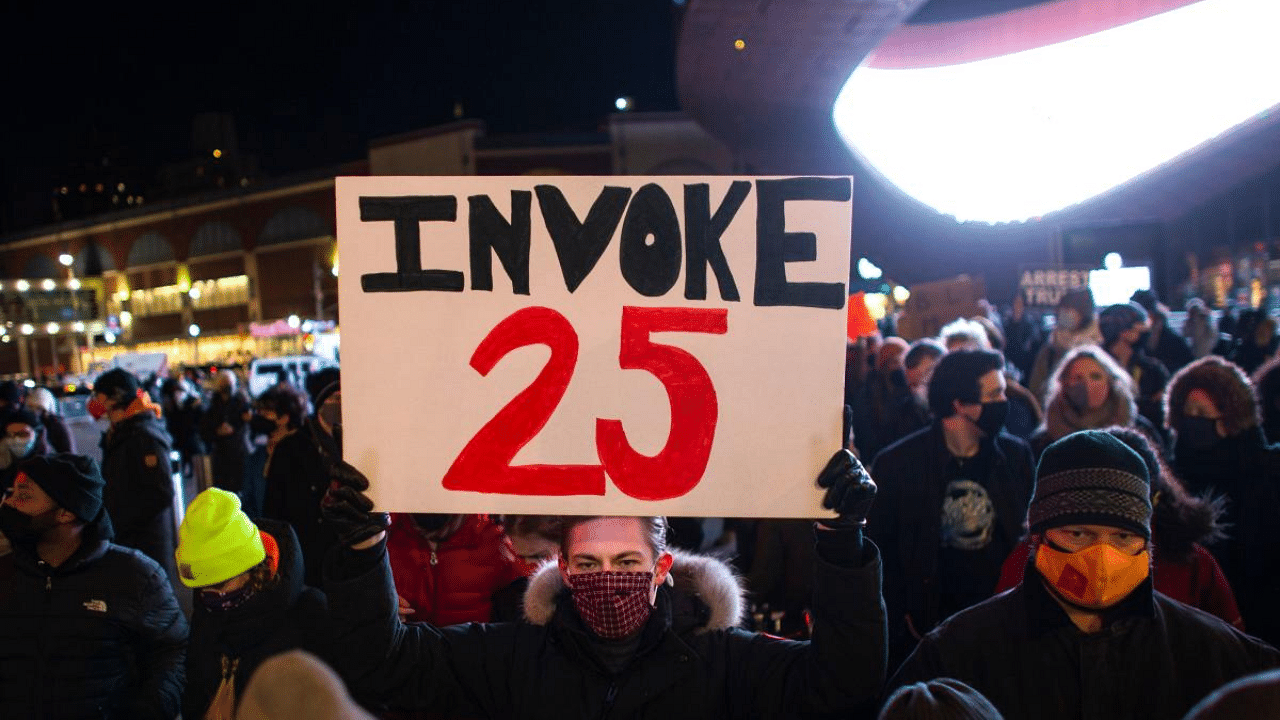
President Donald Trump faced a growing chorus of calls Thursday to be removed from office under the 25th Amendment for inciting the mob violence that swept through the US Capitol one day earlier.
Adopted in 1967, the 25th Amendment lays out the provisions for a transfer of power from a US president who dies, resigns, is removed from office or for other reasons is unable to fulfill his or her duties.
It has been invoked on several occasions, notably by Richard Nixon when he resigned in 1974 and for presidents undergoing a surgical procedure so that power could be shifted temporarily to the vice president.
In October of last year, there was talk of Trump possibly invoking the amendment when he became ill with Covid-19, but in the end he took no such action.
Now, Senate minority leader Chuck Schumer and House Speaker Nancy Pelosi are leading appeals for Vice President Mike Pence to invoke the amendment in the waning days of Trump's term, which ends January 20.
Schumer, Pelosi and others in and out of government are speaking out after Wednesday's shocking scenes in which an angry mob egged on by Trump overran security at the US Capitol, rampaging for hours and disrupting a proceeding in which Congress ultimately certified that Joe Biden beat Trump in the November 3 election and will be America's next president.
US lawmakers began to address the question of power transfer from the chief executive in the late 1950s amid the ill health of President Dwight D. Eisenhower.
It took on added urgency following the 1963 assassination of President John F. Kennedy, and the 25th Amendment was passed by Congress in 1965 and ratified by the required three-fourths of the 50 US states two years later.
Section 3 of the 25th Amendment addresses the transfer of presidential powers to the vice president when the chief executive declares that he or she is unable to fulfill the powers and duties of the office.
Section 4 addresses a situation in which the vice president and a majority of the cabinet determine that the president is no longer able to discharge their duties. This section has never been invoked.
Section 3 has been invoked three times.
The first was in July 1985 when president Ronald Reagan underwent surgery under general anesthesia for removal of a cancerous polyp from his large intestine.
Vice president George H.W. Bush was made acting president for about eight hours while Reagan was in surgery.
President George W. Bush temporarily transferred power to vice president Dick Cheney in June 2002 and in July 2007 while he underwent routine colonoscopies under anesthesia.
Following Reagan's serious wounding in a 1981 assassination attempt, a letter invoking Section 3 was drafted but it was never sent.
Under Section 3, the president informs the president pro tempore, or presiding officer, of the Senate -- currently Republican Chuck Grassley -- and the speaker of the House of Representatives, currently Pelosi -- in writing that he is unable to discharge the duties of the office and is temporarily transferring power to the vice president.
Under Section 4, the vice president and a majority of the members of the cabinet inform the leaders of the Senate and House that the president is incapable of discharging his duties and the vice president becomes acting president.
If a president contests the determination that he or she is unable to fulfill their duties, it is up to Congress to make the decision.
A two-thirds majority in both the House and the Senate would be needed to declare the president unfit to remain in office.
Former deputy FBI director Andrew McCabe has claimed that former deputy attorney general Rod Rosenstein raised the possibility of invoking Section 4 against Trump after he abruptly fired FBI director James Comey in May 2017.
Rosenstein has denied the allegation.